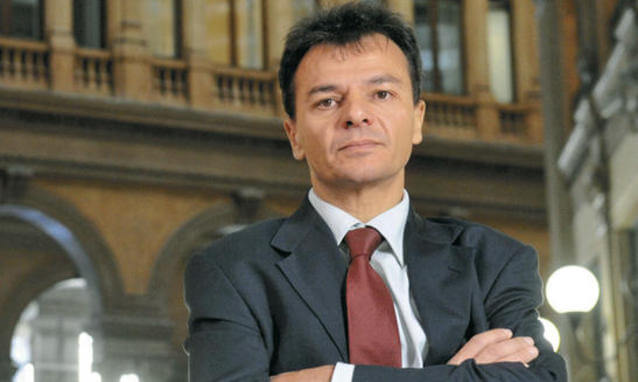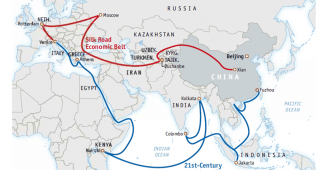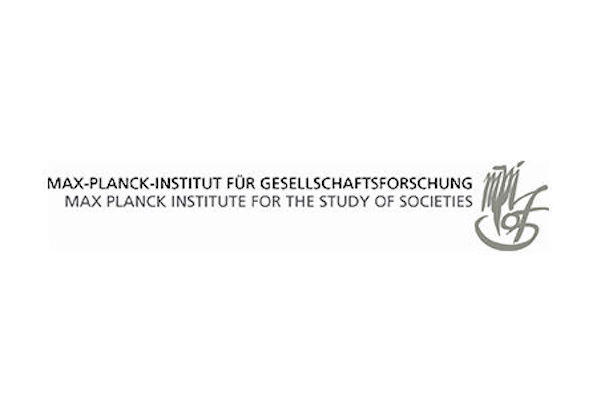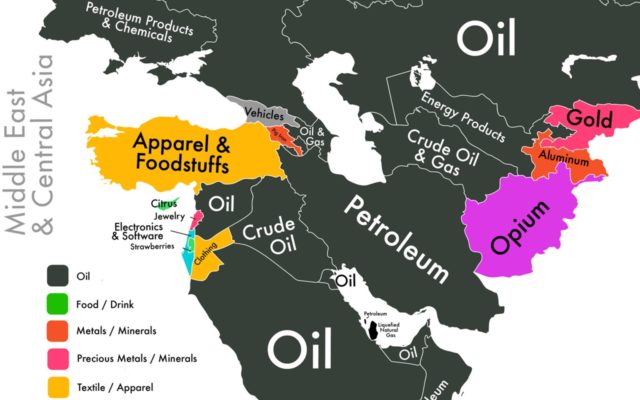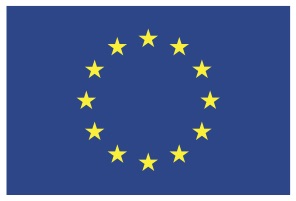By Veronika Sušová-Salminen
Global Systemic Designs – Local Political Consequences
Introduction
Recent developments in Europe show that the global financial crisis and its consequences are far from being resolved. On the contrary, we are witnessing deepening signs of a meta-crisis which goes beyond the economic sphere. This paper will try to shed some light on the key systemic problems and political implications of post-communist transformation in Central East Europe (or CEE).[1] Post-communist transformation was a composite part of wider systemic developments at the global level. At the regional level, it continues to be key to understanding today’s political situation, including the crisis of democracy.
Commenting on two important approaches to the understanding of the Ukrainian crisis, Mary Kaldor wrote very recently: “Perhaps the worst mistake of the west in the aftermath of the Cold War… were the neoliberal economic strategies imposed on countries emerging from communism. Instead of substantial amounts of aid and a managed process of reform that took into account social factors in societies where employment and public services had been guaranteed, western donors proposed what was known as ‘shock therapy’.” And she concludes: “What happened was not a transition to democracy and legitimate capitalism but to kleptocracy and the political marketplace.”[2] This is a radical re-interpretation of the post-communist transformation and its political outcomes, one that is quite different from optimistic scenarios of the past and even more distant from the wishes of people all across the region in 1989.
The region of Central East Europe began to transform at the particular historical juncture of global capitalism. Its integration into the European and global economy was inspired by neoliberal dogma formulated in the so-called “Washington Consensus” and domesticated in the region. Neoliberalism dramatically shifted the equilibrium between politics and economy in favour of the latter. It must be understood beyond the economy as a particular type of subjectivity based on the prioritisation of economic calculus and radical individualisation, and also as a transnational configuration of state-society relations.[3]
However, Central East Europe represents a different pathway to transformation than its more eastern neighbours, mainly the post-Soviet countries of Eastern Europe, such as Belarus, Ukraine, Moldavia and Russia. These differences are structural, political and cultural, as well as geopolitical. On the other hand, there are also many similarities stemming from general transformative models. And, finally, there are undoubtedly many similar problems shared over the entire continent of Europe and beyond. This reminds us that any exclusivist view is very limited.
The World Economy and Central East Europe
Immanuel Wallerstein’s classical theory of World-Systems[4] focuses on the division of labour as a constitutive force of the modern world economy. This theory characterises different regions of the world into three categories. In brief, there is a core (centre) producing industrialised goods, technological innovations and financial services. On the other hand, there is a periphery producing mainly raw materials and selling manual and cheap human labour. Somewhere in-between lies the semi-periphery: a mixture of both production models. The relations between these different entities are very complex and characterised by a mutual but asymmetrical dependency. The developments of the last forty years (including de-industrialisation of the core and its increasing financialisation) brought in a slightly different quality of centre-periphery relationships. Furthermore, there are clear signs of new economic and financial centres emerging outside of the West (such as China and India).
Historically, Central East Europe (as well as Eastern Europe) has been gradually integrated into the world economy with an increasing focus on the peripheral character of production and relations since the sixteenth century. Throughout this integrative (and indeed transformative) stage, commercialised agricultural production has been a main export to the core regions of the world economy.
The region was located largely outside of main commercial routes which underlined its divergence from Western Europe. This constellation was later accompanied by the introduction of so-called second serfdom, by the uneven regional distribution of huge (semi-capitalist) aristocratic estates in the countryside as well as by the weaker (or weakening) position of cities and slower levels of industrialisation. A focus on forced work (serfdom) and semi-industrial/agricultural estates deeply influenced future social and political development of the region. Neither phenomenon can be seen as a simple feudal institution but as semi-capitalist phenomena typical for (semi)peripheral areas of the world economy. In short, rather than being an expression of some endogenous “backwardness”, they went hand in hand. At the end of the nineteenth century there was a great divergence over the region – its Western parts became an industrialised semi-periphery while the Eastern parts maintained their peripheral status.
In its implications, post-communist transformation largely integrated Central East Europe according to its historically given and complex legacies as an ambivalent and diverse semi-core/semi-periphery. It was a re-integration based on systemic path dependent processes (internal and external) together with adaptation to the new capitalist (neoliberal) era of the world economy.
Four decades of socialist experimentation with its system-emancipatory efforts (which failed but should not be forgotten) were not able to overcome this systemic programming. As Wallerstein pointed out, the socialist experiment was a political structure to help adapt to the consolidation of industrial capitalism used by states of the semi-periphery. Socialist development largely contributed to modernisation but, in parallel, it also underlined or reproduced semi-peripheral or peripheral features of the region. The neoliberal inspired transformation took over and further accentuated a (semi)-peripheral status of local economies and democracies. In its implications, post-communist transformation largely integrated Central East Europe according to its historically given and complex legacies as an ambivalent and diverse semi-core/semi-periphery.[5] It was a re-integration based on systemic path dependent processes together with an adaptation to the new capitalist (neoliberal) era of the world economy. A very similar argument can be made about Europe beyond the European Union – for example, Russia did not overcome its peripheral status as an economy dependent on raw materials (and economic conjunctures), which was born back in the sixteenth century.
Structures of the Neo-Colonial/Neoliberal Regime
Czech economist Ilona Švíhlíková recently published a book called How We Became a Colony? (2015).[6] In it she tries to grasp the main systemic problems of post-communist development using, in particular, the Czech example.[7] In her view, the Czech economy features clear (neo)colonial features ingrained in its structure, which is based on dependency on the West (core), in general, and on Germany in particular.
Švíhlíková accentuates the complex interplay between domestic and external factors creating such a neo-colonial condition. The Czech Republic became export oriented and dependent on strategical areas (such as food and agriculture production, but also investments). Its main export goods are not only the industrialised products of Western transnationals (mainly cars and other industrial components) but, in fact, it is also an “exporter” of cheap skilled labour.
Paradoxically, this structural reliance on labour does not meet with the adequate social, educative and health policies needed to develop and protect human capital. This represents a clear divergence from the theory of a labour-based state. The Czech post-communist economy (and many others too) uses human labour as a raw material in line with neoliberal/neo-colonial state practices.
In sum, we can speak of an exploitive, short-sighted and socially degradative model. As a result, the economy and social sphere are deformed. The new version of a (metaphorically speaking) “third serfdom” features very contemporary structural characteristics. And this is, again, intrinsically linked with the systemic conditions of the world economy and domestically created democratic defects.
The ever declining Czech (as well as V4 and indeed European) welfare system was reoriented around short-termcompensation, not development or sustainability. The global crisis only deepened the welfare crisis, leading towards radical austerity policies accompanied by asocial rhetoric and growing political alienation and social deprivation. Moreover, as Švíhlíková further argues, the export dependency and exploitive tendencies regarding labour are only enforced by the very monetary policies of the central bank (artificial devaluation of currency) and unjust and ineffective tax policies in macro-economic terms. In short, such an economic model is set up as an export economy based on the sale of underpriced human labour.
This has recently been accompanied by an enormous outflow of dividends from the Czech Republic abroad. In 2015 a record CZK 214 billion (EUR 7.9 billion) flowed out of the country, one of the biggest outflows in the EU.[8] This type of outflow is, however, quite typical for the entire region of Central East Europe. And its key receivers are Western corporations and banks also within the EU. In the Czech case it represents 5% of the country’s GDP. In sum, we can speak of an exploitative, short-sighted and socially degradative model. As a result, the economy and social sphere are, and continue to be, deformed. The new version of a (metaphorically speaking) “third serfdom” features very contemporary structural characteristics. And this is, again, intrinsically linked with the systemic conditions of the world economy and domestically created democratic defects as a composite part of the semi-peripheral condition.
Sour Fruits of Transformation
It is inevitable that (semi-)peripheral neoliberalism works in a complex interplay between imported ideas and ideologies (models) and local traditions and legacies. The desire to be “like them” (the West) is a goal that cannot be reached due to systemic conditions. But this remains generally unreflected and, therefore, a source of growing frustrations and ideological struggles. In his book about post-communism[9], Croatian philosopher Boris Buden noticed another aspect of transformative processes beyond the economic sphere: the repressive infantilising of Central East European citizenry as a composite part of transformation. Buden notices largely paternalistic Western discourses embedded in the imperial relationship between the European West and its eastern peripheries which is conceptualised as a relation between the teacher and the apprentice. The children of post-communism began to wake up politically with increasingly sobering feelings, social anxiety and rising levels of frustration. And the overall picture is rather messy. But is it really so surprising?
In 1992 German sociologist Claus Offe published an influential study[10] about the potential problems of Eastern European transformation. He argued that there were several dangers and risks related to the fact that transformation is based on three cluster problems: building capitalism, building democracy and building the nation state. In particular, Offe speaks of a) failed marketisation due to the preservation of cartels and monopolistic structures, b) the obstruction of democratic politics as a result of the interference of domestic and international capital, c) the successful marketisation without the ability to generate an equitable distribution of its benefits, or d) some kind of authoritarian return to nationalisation of property. Last but not least, Offe (in 1992) argues: “Accumulated disappointments and frustrations might give a rise to demands for a type of ‘democracy’ that is based on institutional structure other than civil liberties and representative government – for example, populist presidential dictatorship.”[11] Unfortunately, Offe seems to be quite right in his twenty-four-year-old evaluation of democratic risks.
Back in the Systemic Past
Central East Europe made an interesting road from the past to the past during its so-called post-communist transformation. The same can be said of its more Eastern neighbours such as Ukraine or Russia, situated on the EU’s outer periphery. Recent political turmoil in Ukraine should be viewed against the backdrop of the social and political developments that took place between 1991 and 2004/2013 respectively. It is fascinating that recently Ukraine set itself on a very similar neoliberal path of reforms based on the “successful” regional experience of countries in Central East Europe and with the personal help of known shock-therapists such as Leczek Balcerowicz or Ivan Miklóš.
Of course, the success of transformation is evaluated very differently. Some will argue that it was a success story (which has to be repeated in Ukraine now) and that economic numbers of regional performance are quite good or not so bad. But many voices are more sceptical and critical, especially when taking into account social and welfare criteria and self-perceptions.[12]
Our approach to the problem obviously emphasises the idea that the economy is an instrument for achieving better quality of life for the majority of citizens.
The economy should deliver public goods in terms of welfare, safety, social standards and sustainability while respecting ecological limitations. It should not be an aim, per se, or a greedy engine to concentrate wealth within a limited strata of the population. In Central East Europe there is a strong feeling of double alienation between economy and society, and society and politics. And this alienation goes beyond statistical numbers of economic growth because it is deeply seated in the social world. It also matters on what basis such a growth is based, or how political economy within each country actually works. But it is increasingly clear that neoliberalism has become a method of devouring a newly born democracy and civic society in spite of all its proclamations. Thus, in terms of building of democratic capitalism, its outcomes become very dubious.[13]
The systemic context is also important from the point of view of the dominant paradigm. Returning to the words of Mary Kaldor, it might be said that the CEE region came to be a laboratory for neoliberalism, a symbolic locus of its greatest triumph as well as a main engine for a next expansive march of neoliberal doctrine globally. There was not, and could not be, any new type of “Marshal Plan”. In other words, transformation helped to boost neoliberalism and, according to some, it postponed its inevitable crisis.
Transformation Legacies: Current State of Affairs
It seems the economic crisis is now weakening and countries of the CEE region are currently witnessing an improved economic performance. However, the situation is much worse in social and political spheres. The global crisis helped open the floodgates to a deluge of frustration, unfulfilled expectations, uncertainty and also distrust within Central East European societies, taking on a somewhat different form and intensity in each country. Furthermore, neoliberalisation has reached its point of no return, making more visible its negative socio-political implications in the region and beyond.
Firstly, at present we are witnessing quite a visible crisis of democracy that is accompanied by a crisis of the elites and loss of their political legitimacy. Political party systems are becoming fragmented and volatile. Traditional parties are in decline because they are no longer rooted in society. This situation has a somewhat longer tradition in the Baltic countries and in the Balkans, but it has also become the reality in the more stable political environment of the Czech democracy. If we also understand democracy as a system based on political innovativeness, then CEE democracies have a very poor record. Here, it is again a dependent or semi/peripheral status which blocks any innovativeness and which leans towards an often bad or superficial imitation of Western models.
There has been a subsequent decline in political participation, such as participation at elections, accompanied by very low levels of civic engagement and low levels of social capital. This is only deepening the crisis of democracy and/or strengthening populism with its protest message and ability to channel frustration. In fact, public life in CEE is largely framed by a neoliberal political wasteland.
Secondly, we are witnessing a deep and accelerating decline of trust in the European Union (as well as in democratic institutions). The EU is increasingly seen as a negative actor that is distant from domestic or “real” problems. The statistical numbers partly show that distrust of the European Union is growing throughout the region. For example, 63% of Czechs, 51% of Slovaks and 61% of Slovenians do not trust the European Union. In the Baltic countries, Poland and in Romania, however, these figures remain somewhat higher.[14]
The sceptical relationship towards the EU goes hand in hand with the factual political impotency of CEE countries to propose any innovative policies on their own. Their actual status as “outsiders in the EU” can be seen as a composite part of the problem. This creates more space for populist euro-scepticism in the region. Thus, so far there has been a large gap between discussion about the necessary reform of the EU and straightforward scepticism (offering some type of “exit” as a “solution”).
Thirdly, nationalism is becoming one of the responses to the complex problems of the post-transformation situation. In fact, the problem of nationalism is also complex as a phenomenon itself. There are three levels.
At the first level, nationalism in CEE is a belated response to the cultural changes brought about by post-communist development which were, again, not entirely positive. Rapid and unregulated globalisation has been more or less reflected as cultural loss. In this sense, nationalism might be seen as a positive political force acting in the name of the cultural conservation of European diversity (regional and national/local cultures, traditions, arts, cultural practices) and as an anti-globalisation and anti-corporatist vehicle. Furthermore, nationalism also displays a compensatory character – serving as an instrument to reconstruct a collectivist political dimension which neoliberalism has emptied.
At the second level, nationalism responds to the crisis of European Union governance and of the integration project as a whole. For instance, the Ukrainian crisis and the migration crisis have demonstrated the EU’s deficiencies when it comes to successfully solving geopolitical challenges with longer genealogy of emergence. Here, the semi-periphery senses the weakness of the centre with growing alarm. It is even truer in regions with very turbulent historical experiences. This, together with the eurozone crisis, produced a very uncertain environment and a sense that poor governance was on display among EU-level leaders and within EU-level bureaucracy. TTIP and growing dependency on the USA is another source of limited criticism, too. There is, however, a legitimate framework for this articulation of nationalism since any change or reform must begin at the nation-state level according to current conditions.
At the third level, nationalism is a vehicle of political mobilisation featuring conservative or traditionalist characteristics and/or xenophobia or racism. Here, migration continues to be a main topic. It is true that the migration debate in the CEE seems to be artificially exaggerated and seen as a bigger problem than it actually is. On the other hand, there is again a rational background to explain these dramatic occurrences. The migration crisis has revealed deep inequalities within the European Union and exposed the semi/peripheral status of CEE. The region, even as a composite part of the EU (or “the West”), remains a blind spot for the majority of immigrants and refugees. The region’s obvious unattractiveness and, on the other hand, the EU’s efforts to redistribute the burden of immigration are contributing to its rather negative perception. Perhaps this (inter alia) might be seen – with a certain irony – as a litmus test for transformation success from a long-term perspective.

[2] Mary Kaldor: Geopolitics versus the Political Market: the Origins of War in Ukraine,https://www.opendemocracy.net/od-russia/mary-kaldor/geopolitics-versus-political-marketplace-origins-of-war-in-ukraine
[3] See Dorothee Bohle – Gisela Neunhöffer: Why There Was no Third Way? The Role of Neoliberal Ideology, Networks and Think Thanks in Combating Market Socialism and Shaping Transformation in Poland, in D. Plehwe-B. Walpen-G. Neuhöffer: Neoliberal Hegemony. A Global Critique, Routledge: London-New York 2006, 89-104, here 90. On the general history of neoliberalism: David Harvey: A Brief History of Neoliberalism, Oxford University Press: Oxford-New York 2005 or Naomi Klein, The Shock Doctrine. The Rise of Disaster Capitalism, Penguin Books: London-New York 2008, esp. chapters on Polish and Russian reforms: 171-193, 218-262.
[4] Immanuel Wallerstein: The Modern World-System, 4 volumes published between 1974 and 2011 and mapping the history of capitalism from the 16th century until 1914.
[5] For internal capitalist diversity of the region between semi-core and semi-periphery, see Dorothee Bohle – Béla Greskovits, Capitalist Diversity on Europe’s Periphery, Cornell University Press: Ithaca-London 2012.
[6] Ilona Švíhlíková, Jak jsme se stali kolonii?, Rybka Publishers: Prague 2015.
[7] Although, seen from a global perspective, the Czech Republic might be seen as a semi-periphery. In the European context, it is a periphery of the European Union both politically and also economically.
[8] See: http://ekonomicky-denik.cz/z-ceska-do-zahranici-na-dividendach-odtekaji-stovky-miliard/ (Data from Eurostat/ČSÚ).
[9] Boris Buden, Konec postkomunismu. Od společnosti bez naděje k naději bez společnosti, Rybka Publishers: Prague 2013. An article is available in English: Children of Postcommunism (2010):http://www.identitymove.eu/assets/pdf/boris%20buden.pdf
[10] Claus Offe, Capitalism by Democratic Design? Democratic Theory Facing the Triple Transition in East Central Europe, in Social Research Vol. 71: No. 3, Fall 2004, 501-528. (Originally published in 1992.)
[11] Offe 2004: 520-521.
[13] An interactive map of regional well-being in OECD countries, which collects data on common criteria such as community and civic engagement, job access, services, education, income, health and environment as well as life satisfaction, can be used as a reference point. https://www.oecdregionalwellbeing.org/. There is a relatively huge gap between Western Europe and Central East Europe, as well as relatively large internal diversity.
[14] See Eurobarometer 84/2015,http://ec.europa.eu/COMMFrontOffice/PublicOpinion/index.cfm/Survey/getSurveyDetail/instruments/STANDARD/surveyKy/2098
[15] Data: Trading Economics.com: http://www.tradingeconomics.com/
